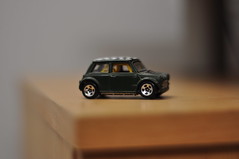 Parents of children who have a child who has an autism spectrum disorder quickly learn that their child behaves in ways that most children of the same age typically do not. Stimming behaviors tend to perplex parents, who cannot attach reason or meaning to the repetitive behavior their child is exhibiting. It can be helpful to keep in mind that there is always a reason why an autistic child is stimming.
Parents of children who have a child who has an autism spectrum disorder quickly learn that their child behaves in ways that most children of the same age typically do not. Stimming behaviors tend to perplex parents, who cannot attach reason or meaning to the repetitive behavior their child is exhibiting. It can be helpful to keep in mind that there is always a reason why an autistic child is stimming.
Stimming, which is sometimes called “self stimulating” is a repetitive behavior that is theorized to be a way for a person to stimulate one or more of that person’s five senses. Stimming is not something that only people who have autism do. If you have ever clicked the end of a pen, over and over again, as you were thinking about something, this can be considered a form of stimming.
The difference is that clicking a pen, while annoying, is something that a person can do in public without drawing much attention to themselves. Many of the stimming behaviors that are selected by children who have autism are not ones that are socially acceptable. Parents often feel a need to stop these kinds of behaviors, immediately, before the child starts to look odd to his or her peer group.
One of the most common forms of stimming is one that my brother, who has Asperger’s Syndrome, used to do a lot when he was a child. When he got overly excited about something, (and often, that something involved a video game), he would flap his arms. The more excited he got, the faster he would flap.
When he was very little, he had a large, plastic, green car that he enjoyed playing with. Only, instead of driving the car across the floor like most little boys would do, my brother would hold the car close to his face, spin one of the wheels, and watch it until it stopped spinning. Then, he would spin the wheel again.
These are two common forms of stimming that an a child who has autism might choose to do. Other types of stimming include spinning around in circles, ripping paper into strips, or systematically coloring in every square on a grid lined paper, one by one, in neat rows.
These behaviors might look strange to a parent, and this is why many parents feel the urge to immediately make their child stop the stimming behavior that he or she has chosen to do. Keep in mind that stimming is serving a purpose. In my brother’s case, we learned that the flapping was his way of releasing the tension in his body that appeared as a result of being over stimulated, and excited, by something that was going on around him. We learned that when he was watching the car’s wheel spin, over and over again, he was using it as a way to calm himself, or to wind down at the end of the day.
If you make your child stop doing a particular stimming behavior, it is very likely to be replaced by a different one. Parents can guide their child about what kinds of stimming is more acceptable to do in a public situation than other forms, but this will not always influence the child’s behavior. Remember that stimming is not something your child is doing to be obstinate. It is a coping mechanism. Stimming may look a little strange, but it always has a purpose behind it.
Image by Sankarshan Mukhopadhyay on Flickr

